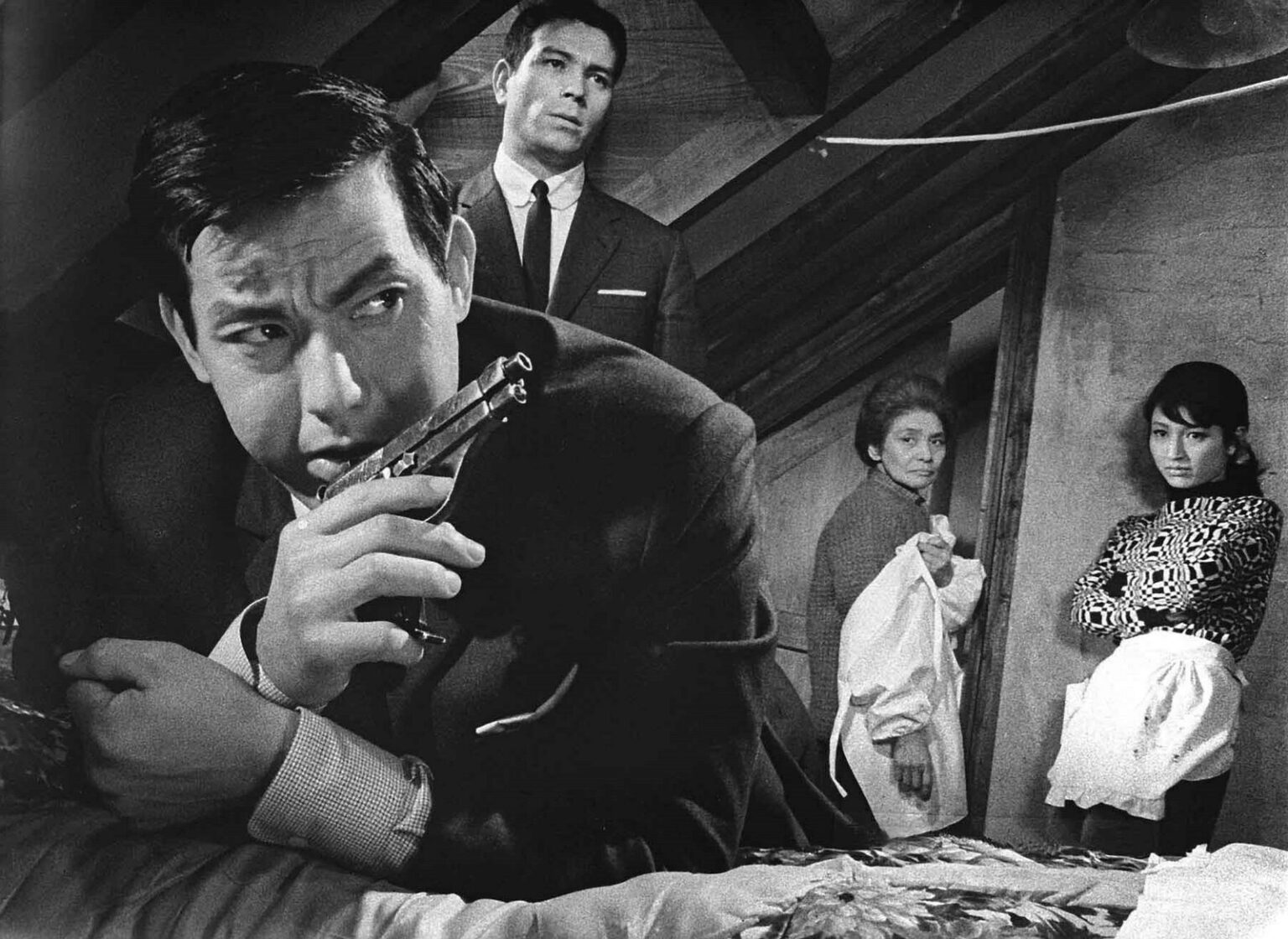As a part of ‘Man Movie May,’ I rewatched the 1967 yakuza-noir-spaghetti western “A Colt Is My Passport” by Japanese Director Takashi Nomura. Although this is not a common action-packed flick like those we usually review, I believe it’s important to give credit to how influential it is—not only to action films, but to characters like Daniel Craig’s James Bond.
After being hired to kill one of the partners of a yakuza organization, contract killer Shuji Kamimura (Joe Shishido) and his partner find themselves having difficulty to escape their persecutors. As a new yakuza partner comes into the organization and they solve their differences, the group decides to get rid of Kamimura, who has an iron-forged determination to survive and is now being helped by a motel waitress tired of her current living situation between harassing truck drivers and a demanding boss.
As I already mentioned, this isn’t necessarily a “Die Hard” or “Taken“-like action film with incredible and cinematic chase sequences, lots of explosions, and blood everywhere, but the boxes are still checked in a more minimal way, almost in a slow-boil that allows for a more savory experience.
Despite being an action/crime film, the cinematography approach is something that adds so much value and that I haven’t seen in other similar films (both from the East and the West Hemispheres.) The insane amount of zoom-ins, zoom-outs and close-up tracking shots can be distracting, but they’re more helpful than otherwise, using direct references out of Sergio Leone’s westerns and any other French New Wave film.
Now an important thing to note is the noir feel that the movie has, but in the context of its country of origin. While in the West we usually have the characters of classic noir films living in a world that won the war (more specifically World War II), “A Colt Is My Passport” has its characters live in a Post-WWII Japan that lost the war, so the dynamics, although not super obvious, definitely have a different approach compared to the suave, macho, ruthless protagonist. And while Joe Shishido’s Kamimura also shares some common ground, his approach is of a collected and methodical man that, although still ruthless when needed, is willing and able to be empathetic and caring, while also having faults and weaknesses (much like Craig’s Bond; and its much more human approach in the later franchise deliveries.)
Probably the only thing that bothered me was the overuse of the Morricone-esque soundtrack and motifs, but then again it gets balanced out with the quieter moments that lead to major moments of story. A certain calmness before the storm, if you’d like.
Nomura made a film that not only is entertaining, but it feels so centered and poetic that it’s easy to say that it’s very ahead of its time. And while it doesn’t have a crazy number of action-packed sequences, I can assure you that the few ones that has are absolutely amazing. From a wide shot of a character jumping out of a car speeding its way into a lake, to the final shootout—in order to not spoil anything else I will end this by saying that this is a movie that rewards patience.

